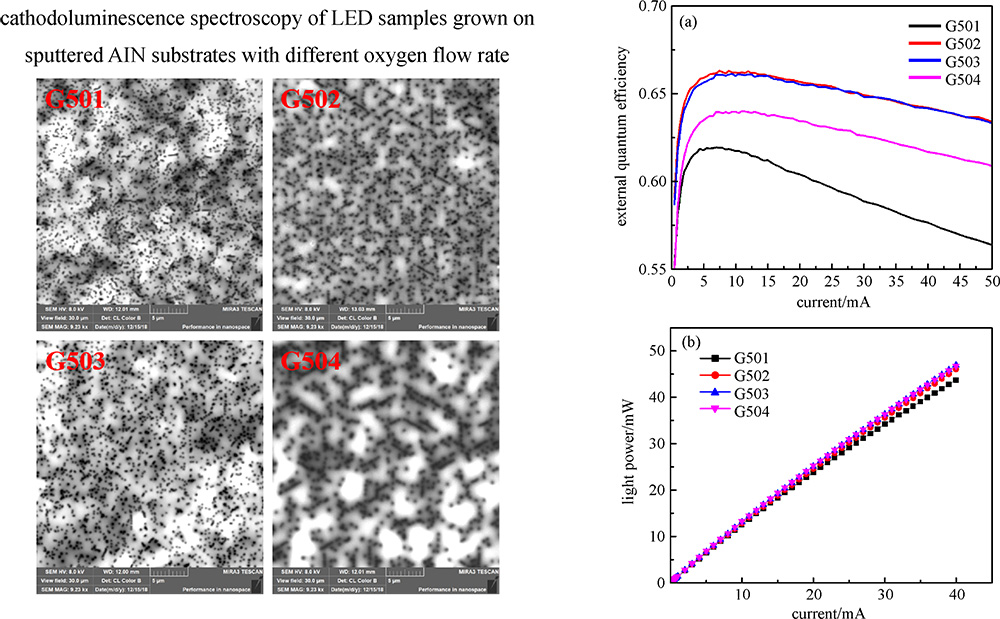To shed light on the improvement of EQE, cathodoluminescence (CL) spectroscopy for four samples was measured and the results are shown in Fig. 7. It is exhibited that the densities of surface defects of the four samples are 2.75 × 10
8, 1.65 × 10
8, 1.59 × 10
8, and 1.09 × 10
8 cm
−2, respectively. Generally, the surface defects in the CL test are considered as the V-pits in blue LED, which play a vital role in the device performance. The morphology of V-pits is measured using TEM, as shown in Fig. 8. V-pits are like an aperture near the multiple quantum wells, forming an enrichment area, which can promote hole injection to the quantum wells near the n-type layer and improve the luminous efficiency. The luminous efficiency will improve with an increase in the density of V-pits. Alternatively, V-pits will result in the loss of light areas, causing the light power to decrease [
15–
20]. According to the density of V-pits, assuming the V-pit is approximately 200-nm long, the losses of light areas for G501, G502, G503, and G504 are 8.5%, 5%, 5%, and 3%. Hence, the injection promotion and light area loss both give rise to the highest EQE for G503. In addition, the light area loss may cause an increase in actual current ampere density, which will further aggravate the efficiency droop. In conclusion, the oxygen flow rate of PVD-AlN buffer deposition could change the density of V-pits, which will further influence the luminous efficiency and efficiency droop.











